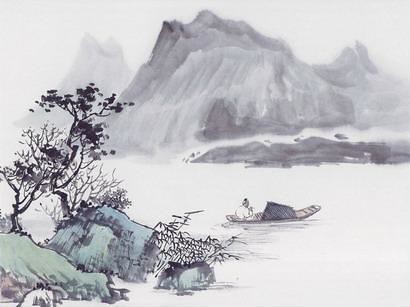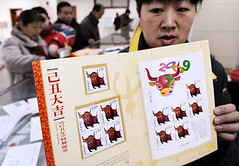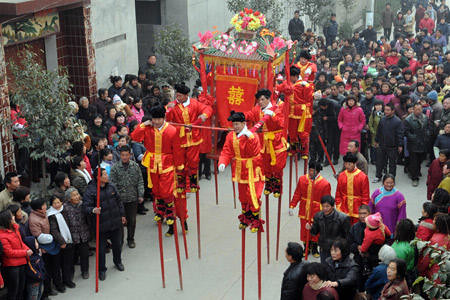| Home > Living in China > Diet |
Main Chinese Cooking Methods
Chinese Cuisine adopts several cooking techniques. Cooking temperatures and methods are as important as the ingredients.
Stir-Fry(chao)
Stir-frying is the classic method; drop a small amount of oil in the wok over high heat, toss and turn the food when it cooks. In stir-frying, the food should always be in motion. Spread it around the pan or up the sides of the wok, then toss it together again in the center and repeat. This method allows meats to stay juicy and flavorful, vegetables to come out tender-crisp.
Deep-frying
The oil must be at the right temperature---360° to 375°--- to cook food properly. A deep fryer or a deep saucepan with a wire basket which fits inside it, is most convenient.Two temperatures of oil for deep frying are used.When the oil begins to smoke, it is ready to fry pork and beef, the tougher meats. When the oil begins to bubble, it is suitable for chicken and kidneys. To secure the most tender results, it is important to observe the oil temperature as given in the recipe.
Steaming(zheng)
The Chinese steam food in woven bamboo trays that stack one atop the other. The beauty of this system is that several foods cook at one time. Many sorts of foods can be steamed: meats, fish, dumplings, buns stuffed with meat or a sweet bean paste-bread! For best taste, the water should be boiling when the food goes into the steamer and the flame should be high enough to keep it boiling. Steaming preserves flavors and food nutrients through the use of steam temperaturer. Several tiers can be used in the steamer to cook different foods simultaneously.
Red Stewing or Red Cooking (hongshao)
Red stewing is uniquely Chinese, similar to ordinary stewing, but here the food is cooked in large quantities of soy sauce and water. It is the soy sauce that makes the dish rich, tasty, and reddish brown. It is usually made of pork, beef, ham, chicken, duck, or carp. Red stewing is used primarily for cooking meats. Vegetables if included, are added later just before serving or towards the end of cooking. Various seasonings, flavors and condiments are added to red-stewed dishes such as soy, sherry, ginger, scallions, cilantro and many more.
Boiling (zhu)
In parboiling, ingredients are cut and washed first, then put in a large pot in which they can float freely, over high heat. Parboiled ingredients are poured with the water into a colander, rinsed or soaked in cold water until thoroughly cooled, and used as the recipe directs, or in salads. For full boiling, as in preparing soups, a slow simmering process is employed. As soon as the water boils, the heat is turned low and the soup allowed to simmer for whatever period of time is necessary.
Roasting (kao)
The Chinese do their roasting in ovens over a charcoal fire, with frequent basting. Roast dishes may be prepared in Western stoves according to directions indicated.
Cold Mixing (liangban)
Scalded or parboiled ingredients are mixed in salads and chilled before serving. Once used for hygienic reasons, parboiling is now used to tenderize vegetables.
Poaching (jian)
Food is cooked in liquid just below the boiling point. A whole chicken can be pre pared in this manner. Poaching is especially good for cooking delicate fish or boned fowl in a clear soup, slowly simmering until the meat is tender.
Art
 more
moreShadow Play still Popular in Some
Shadow play, a traditional Chinese folk art with a history of more

Origin and Tools of Ink & Wash
Ink and wash painting is an East Asian type of brush painting, also

China Issued Special Stamps for
Citizens in Nanjing, East of China's Jiangsu Province, queued

Customs
 more
moreChinese Kungfu
Origin and Development of Wudang Martial Arts
According to the legend, Zhang Sanfeng is the originator of the
Introduction to Wudang Mountains
The Wudang Mountains, also known as Wu Tang Shan or simply Wudang,
Everybody was kungfu fighting
Niels Tsai, a kungfu enthusiast from Malaysia, was halfway up misty




 print
print  email
email  Favorite
Favorite  Transtlate
Transtlate 
